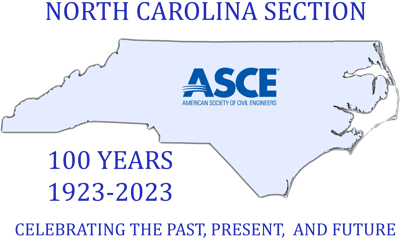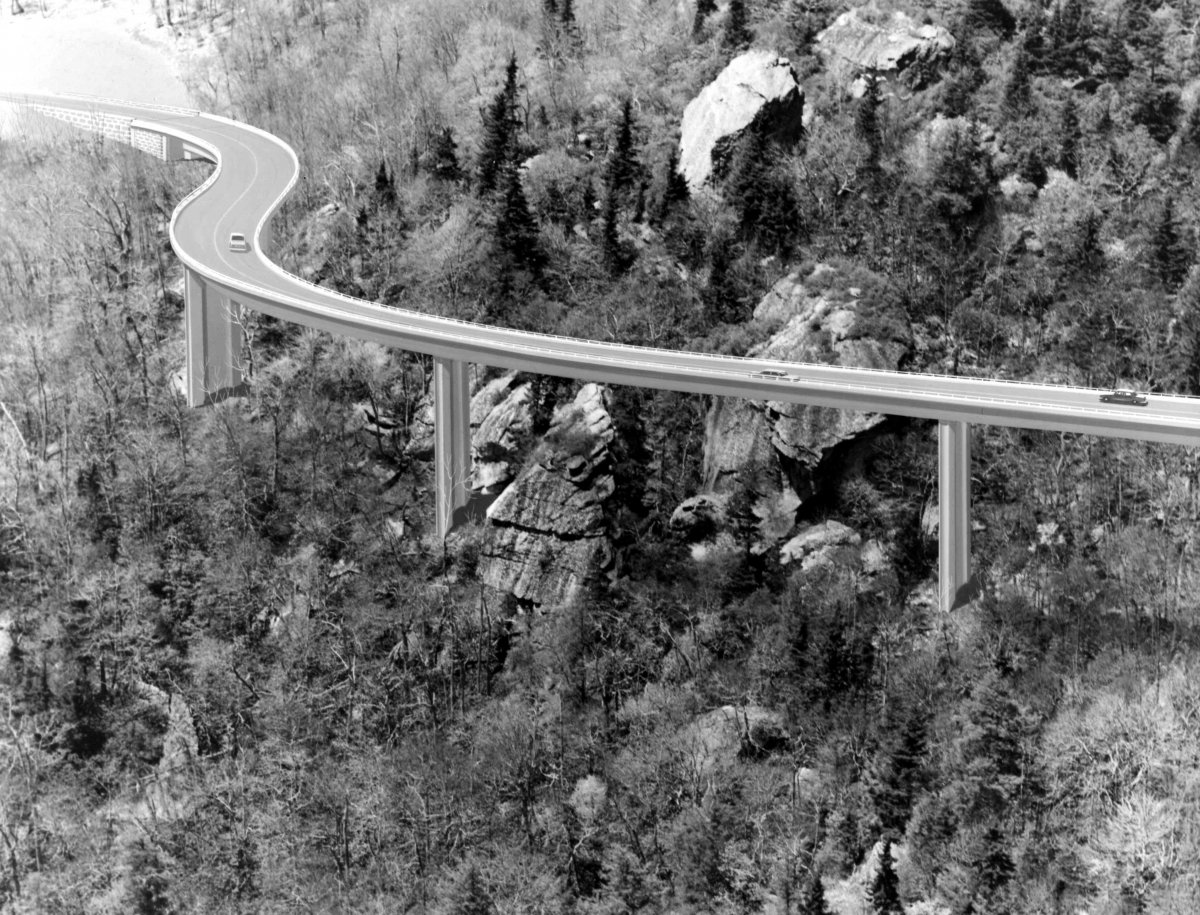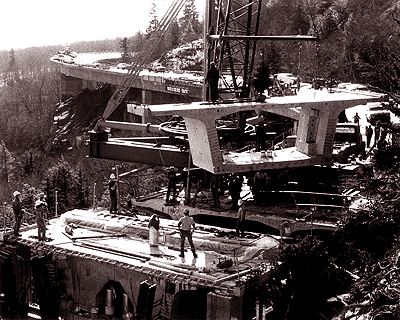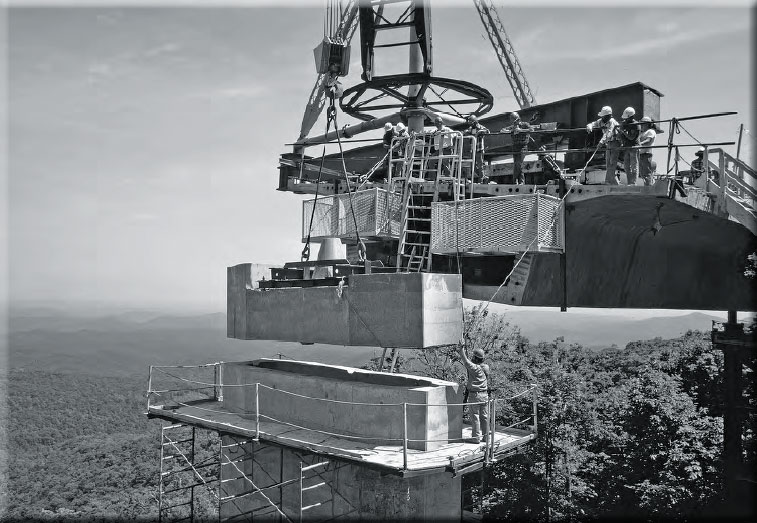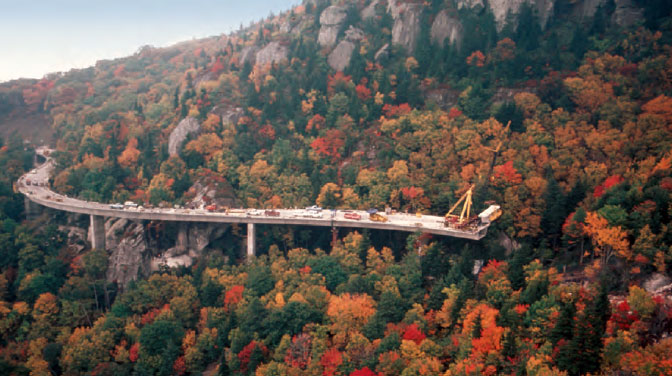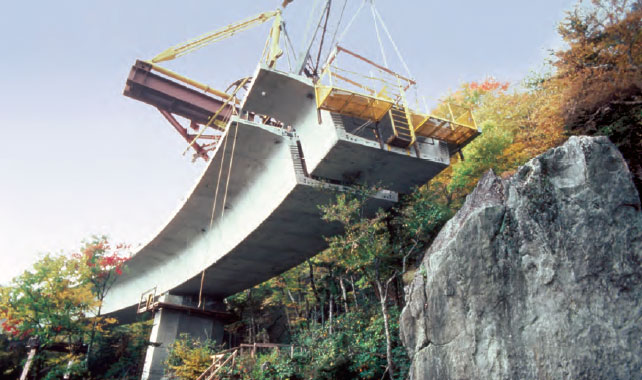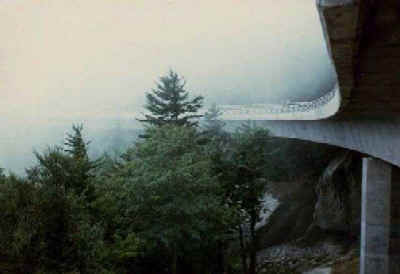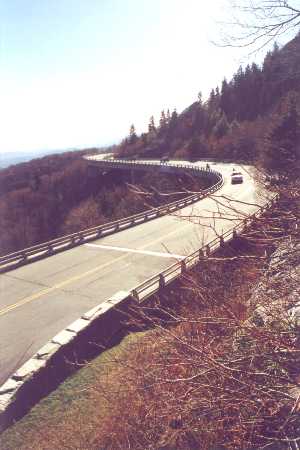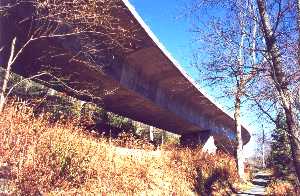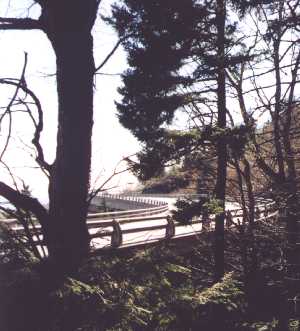Linn Cove Viaduct
Constructed 1978-83; opened 1987; Figg and Muller, Inc. (Tallahassee, FL), engineers; Jasper Construction Co. (Plymouth, Minn.), contractors; Rex Cocroft, Federal Highway Administration, chief supervising engineer, Blue Ridge Parkway on East Face of Grandfather Mountain.
The last link completed on the 469-mile-long scenic parkway that began in 1935 includes the viaduct an innovative 1,243-foot ribbon of concrete that gracefully skirts the side of Grandfather Mountain and rests on concrete piers built to minimize cuts into the slope.
Right-of-way acquired in 1939-40 ran along the base of the mountains, but in the 1950's a new parkway route was designed to cut across higher ridges of the mountain. Hugh MacRae Morton, owner of Grandfather Mountain, refused to give up the land. He fought the higher route "every way we could", arguing that cutting and blasting a road across Grandfather Mountain would be "like taking a switchblade to the Mona Lisa." Morton's campaign delayed the project for more than 20 years. After intervention by Governor Dan K. Moore, park service officials agreed to consider alternate routes and, with Morton, settled on a middle route.
By that time, engineering developments had emerged in Europe that allowed a revolutionary approach in which the road appears to float beside the mountain. The structure literally and figuratively completes the original vision of the parkway in a marriage of aesthetics, environmental sensitivity, and spectacular engineering. The roadway is composed of 153 pie shaped sections - no two the same shape, and only one straight - compressed into a continuous S-curve by internal tension cables. It was built from south to north with precast segments progressively lowered in place by a stiff-leg crane. The seven piers are set on microshaft piles drilled into rock - the only disturbance of the mountainside of massive boulders. (A principal concern was to avoid methods that would destabilize the mountainside - a problem evident in landslides along other mountain highways, including I-40 in recent years.)
Although comparable structures had been built in Europe, this was the first of its type in the United States. The French engineering firm of Figg and Muller was the only one in the world that had successfully used the techniques required. The project was bid at $7.9 million, but final cost rose to $9.8 million. The work crew was almost entirely from the Grandfather Mountain area. Becoming a tourist attraction for its novel construction long before the other segments of the parkway were completed to permit its opening in 1987, the viaduct won national awards from the American Society of Civil Engineers and the Prestressed Concrete Institute.
From "A Guide to the Historic Architecture of Western North Carolina", Catherine W. Bishar, Michal T. Southern, & Jennifer F. Martin, 1999, The University of North Carolina Press, pp 226.
